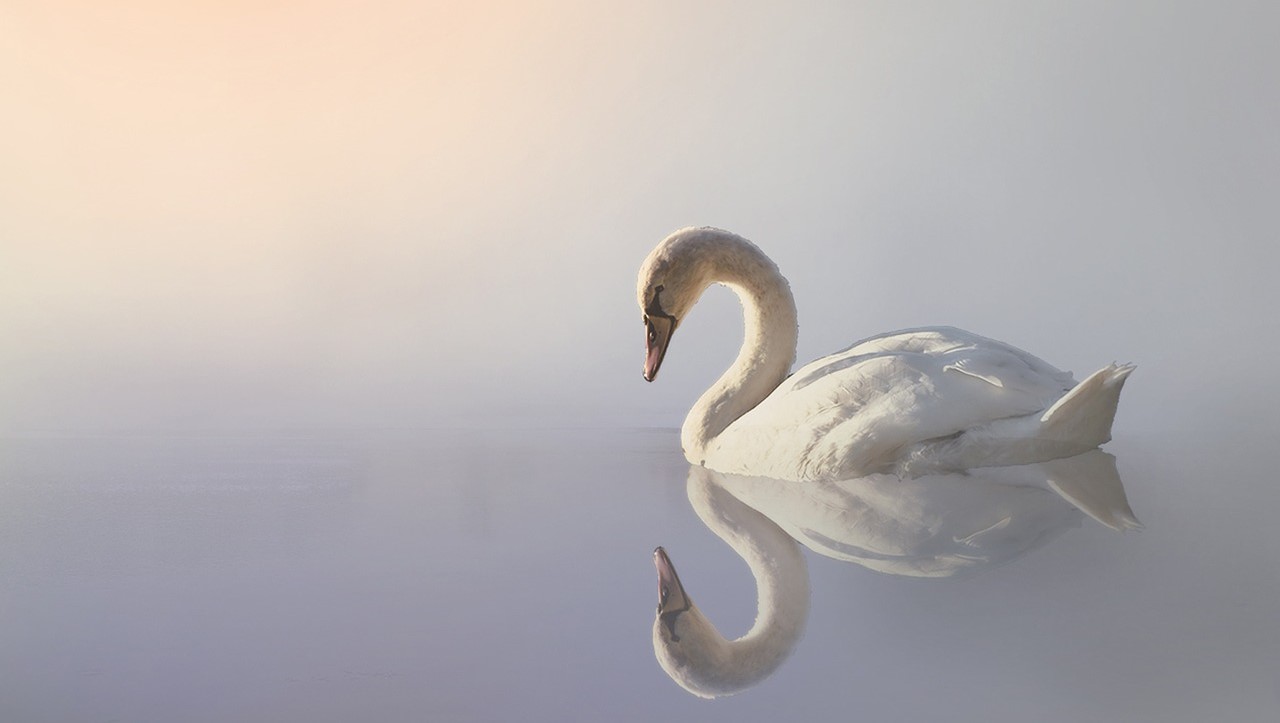When I first started writing about fairy tales, I realized I wasn’t completely sure which story is my favorite. It’s a delicate decision to consider. When I was a kid, I probably would have said Puss in Boots based on my extreme obsession with cats. Or maybe Beauty and the Beast based on my extreme love for the Disney movie. I have a soft spot for tales like Rapunzel, Twelve Dancing Princesses, and Cinderella too. Who doesn’t?
But if I had to pick my hands-down #1 favorite fairy tale, I would pick Swan Lake.
Now if your first reaction to that is “That isn’t a fairy tale! That’s a ballet.” Good on you for knowing that! But this story does indeed have fairy tale roots, and beautiful roots at that.
My Introduction to Swan Lake
I’m proud to say that my first intro to Swan Lake was the music of Russian composer Pyotr Ilyich Tchaikovsky. Both of my parents are classical music buffs, so this score has been in my life as long as I can remember. If you’ve never heard it before, please take a moment to appreciate how breathtaking it is:
I was a very small child when I first learned the story behind this haunting music. Actually my first exposure was the Japanese anime version of Swan Lake (1981). (There are two different English dubs of his movie, and I’m a die-hard for the Nancy Link version. Do not mention Pam Dawber in my presence.) This adaptation is delightfully cheesy, but it’s also a fantastic rendition of Swan Lake. It honors most of the original plot points while also filling in the gaps with lighthearted, child-friendly action. And of course it uses Tchaikovsky’s original score.
I’m also a fan of The Swan Princess (1994), which departs much further from the ballet than the anime version. But both adaptations carry the main story elements of the original tale.
Swan Lake in a Nutshell
Once upon a time, young Prince Siegfried turns 21, and the queen mother decides to throw a ball where he must choose a bride. Dismayed by these expectations, Siegfried takes his horse to go hunting by the lake. He comes across a flock of swans in the water, the most beautiful of which is wearing a crown.
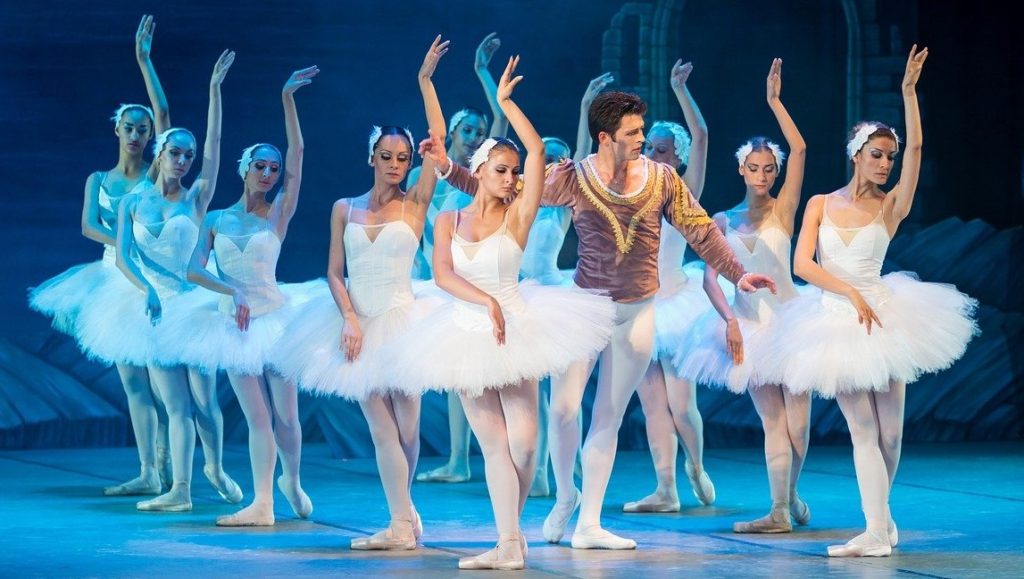
When the moon rises, the swans transform into young maidens, and the swan with the crown changes into a princess named Odette. Siegfried and Odette are instantly drawn to each other, and he learns that she’s under the power of an evil sorcerer, Baron Von Rothbart. She is cursed to transform into a swan by day and only return to human form at night. The reason for this enchantment isn’t explained in the ballet, but most adaptations assume Rothbart kidnapped Odette to force her to marry him and her curse is a ploy to prevent her from meeting other men.
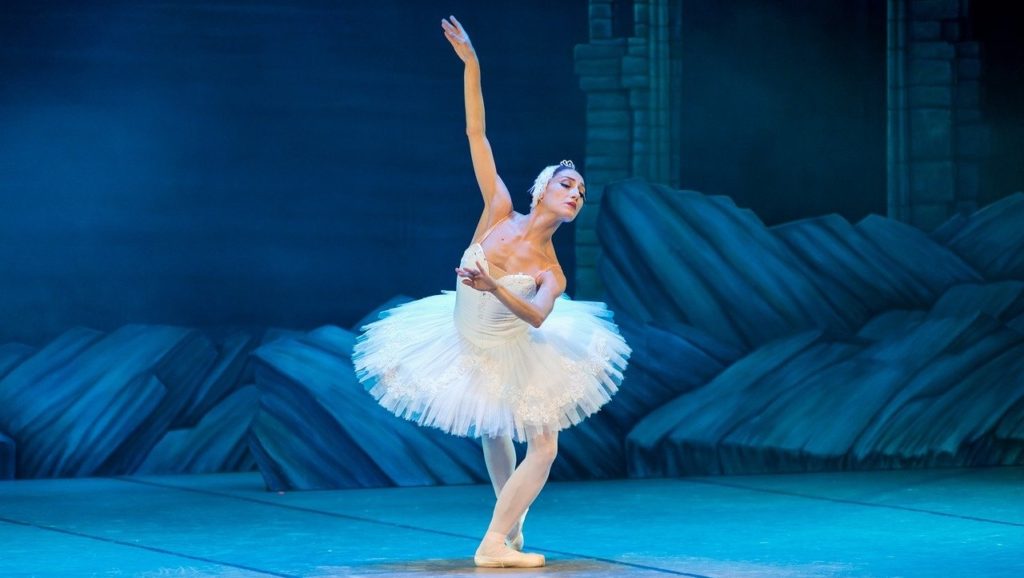
Regardless of why the spell is in place, Odette’s curse can only be broken if a man who has never loved before pledges pure and lifelong love to her. Siegfried immediately assures Odette that he loves her and invites her to attend the ball tomorrow night. There he will choose her as his bride and break the spell, killing two birds with one stone (pardon the pun). Odette is thrilled and agrees to come, but unbeknownst to the young couple, Rothbart has heard everything and is already plotting their undoing.
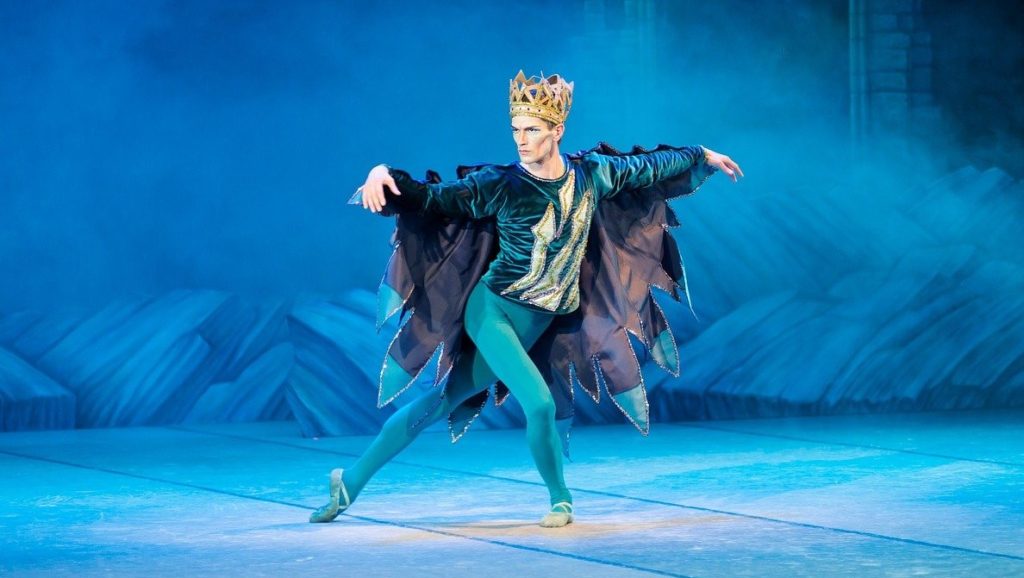
At the ball, a woman arrives who looks exactly like Odette dressed all in black. This imposter is none other than Rothbart’s daughter, Odile, “the black swan.” She’s been magically enchanted to resemble Siegfried’s love in every way, and they dance the night away until Siegfried announces their engagement and proclaims his love. Of course Rothbart informs Siegfried too late that he just pledged himself to the wrong girl. The prince flees to the swan lake to beg Odette’s forgiveness.
Pick Your Favorite Ending
In the adaptations I saw as a kid, Siegfried gallantly slays Rothbart through combat or the power of love, freeing Odette from her curse. But the original story has a much darker ending.
In the ballet, the prince’s tragic mix-up is not so easily reconciled. Now that he’s pledged to Odile, Odette is doomed to be cursed forever. So in the end, Siegfried and Odette drown themselves in the lake, choosing to die together rather than live their lives apart. Pretty bleak.
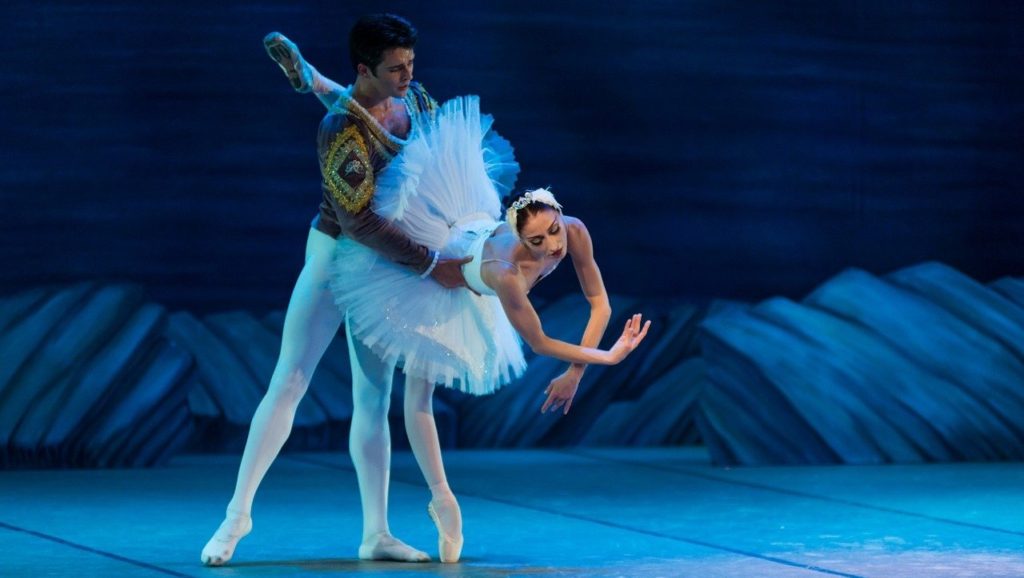
For the record, the original audience of Swan Lake in 1877 hated the tragic ending. Which is why the ending was changed in Swan Lake’s 1895 revival. The couple still drowns, but in this version the double suicide frees the other swan maidens from their curse. Also Siegfried and Odette’s souls ascend to heaven where they’re united in their love. Plenty of modern versions of the ballet stick with the happily ever after ending of Rothbart dying and Siegfried riding off with Odette into the sunset.
So Who Wrote this Story?
No one knows for sure who wrote the original libretto of Swan Lake. It’s widely believed that Tchaikovsky had the lion’s share of creative input on the story along with his fellow creators of the ballet, but where did their inspiration come from?
Several sources claim Tchaikovsky based Swan Lake and Prince Siegfried on the life of King Ludwig II of Bavaria, also known as the Swan King. King Ludwig also died by drowning himself in a lake, but this tragedy happened almost a decade after Swan Lake premiered in Russia. So that theory has been pretty thoroughly debunked as a coincidence.
The more popular theory is that Swan Lake is derived from two different fairy tales.
Beautiful Women as White Birds
The first is a German story called The Stolen Veil by Johann Karl August Musäus. This story is about a young soldier named Friedbert who discovers a flock of enchanted swans. Every night the swans become maidens when they remove their crowns and veils to bathe in the lake. Friedbert steals one of the veils to prevent the youngest maiden from returning to her swan form and turns her into his bride. This story very closely resembles the Swedish fairy tale The Swan Maiden, although this one has a happier ending.
Another suspected source for Swan Lake is the Russian fairy tale The White Duck. In this tale a scheming witch turns a queen into a white duck and changes her own appearance to take the queen’s place by her husband’s side. Especially with its Russian origins, the White Duck seems to be where the false bride trope of Swan Lake came from.
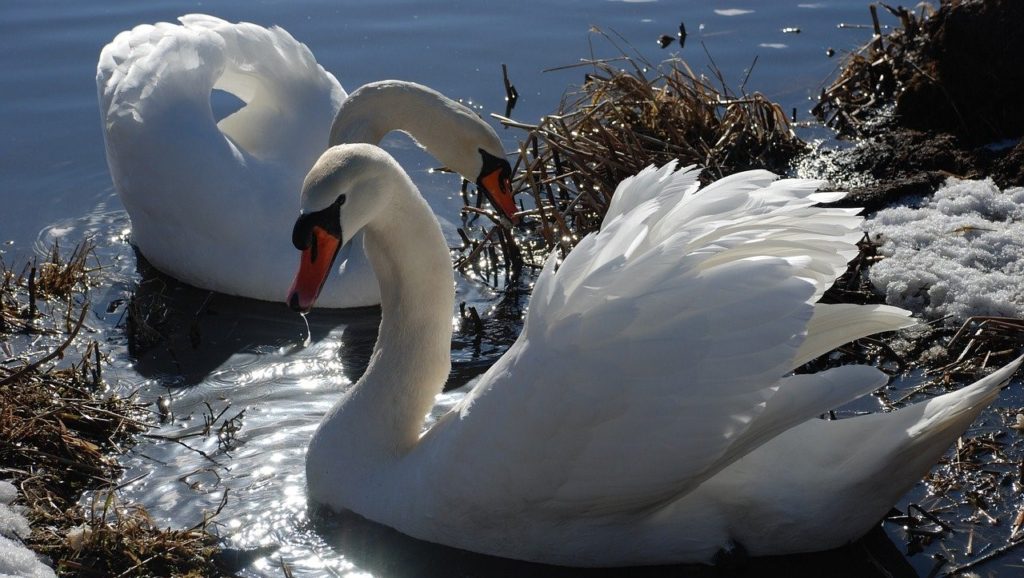
In case you can’t tell, swan maidens are notoriously common in folklore all over the world. Many fairy tales use swans to represent ultimate feminine beauty and virginal purity. Royal animal transformations are also quite common in fairy tales (frog prince anyone?), but I particularly love the bird imagery in Swan Lake.
The false bride is also a pretty common theme. Men in fairy tales get deceived into marrying the wrong woman all the time. And I can’t even tell you how many fairy tale heroines have their happy endings flummoxed or delayed by another woman. The tale that mirrors Swan Lake the most is probably Hans Christian Anderson’s Little Mermaid, who turns into sea foam because her man says “I do” to someone else. Both of these women’s love stories take a tragic turn that sends them to die in the body of water from whence they came. See the parallels?
But My Favorite Theme Is the Power of Words
There are plenty of fairy tales in which requited love is powerful enough to break a curse. Swan Lake is no exception. The fact that Siegfried professes his love to the wrong woman could make this a cautionary tale of falling in love with someone you don’t really know, but I think it’s much more than that.
To me, this is a story about the power words hold and how even good intentions cannot save someone from a broken promise. The power of a vow has always struck me as deeply poignant and quite a romantic concept. We live in a world that doesn’t take commitment or words of love particularly seriously. So to me, this magical world where all your hopes and dreams hang on the words of the one you love feels both majestic and intriguing all at once.
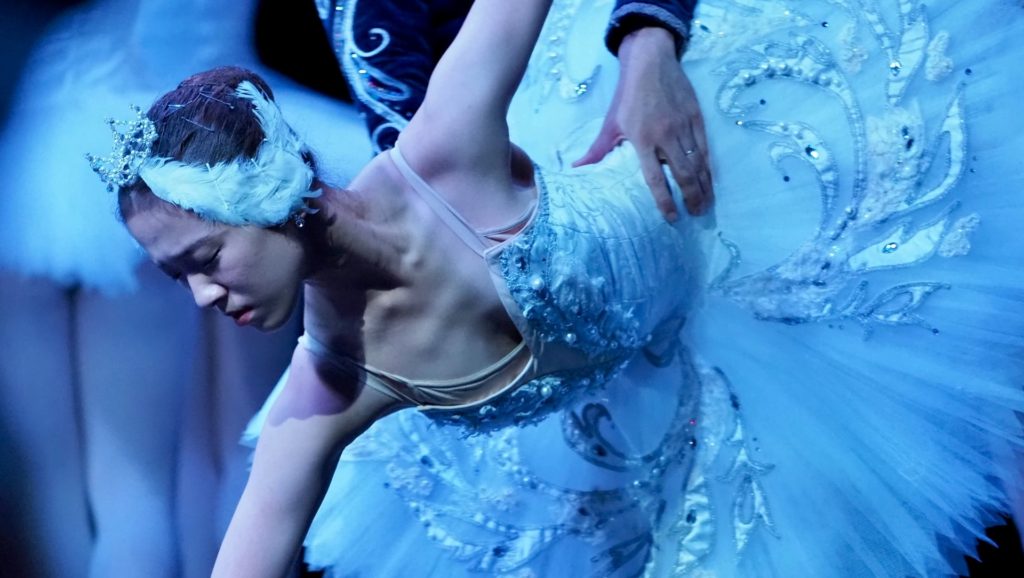
I love Swan Lake in all its forms, both the tragic version and the happily ever after one. Swan Lake is one of the most ethereal and romantic stories ever told, and it’s on my bucket list to see the ballet performed live someday. In the meantime, I hope creative minds will continue retelling this story again and again to keep Tchaikovsky’s work alive. ❧

